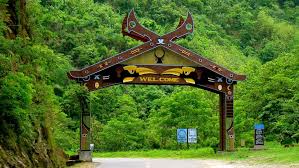Indian Army, the force that’s primarily known for protecting the nation, has yet again proved its role in nation-building by conducting a series of adventure activities along the Line of Actual Control (LAC) in the Northeast. The adventure expedition by the Indian Army and its formation began at the end of August this year.
The Indian Army’s initiative threw light on the Northeastern states’ untapped potential for adventure tourism as it covered most of the border regions from Sikkim to nearly the Eastern tip of Arunachal Pradesh. The adventure expedition, in a synergised and integrated effort, was carried out for roughly three months.
The trans-theatre adventure activity along the LAC included various adventure activities such as Mountaineering Expeditions, White Water Rafting, Mountain Biking and Trekking. These activities witnessed active participation from the civilians and also helped to identify and bring out local talents from the hilly region.
Along with promoting the underrated adventure tourism across Sikkim and Arunachal Pradesh, the three-month-long campaign also served as a platform that showcased the heartwarming military-civilian relations.
The Adventure Sports Campaign
In the adventure sports campaign, there were six mountaineering expeditions, seven treks covering more than 700 kilometres (up to an altitude of 16,500 feet), six cycling expeditions covering more than 1,000 kilometres on unpaved roads in six valleys, and three white water rafting expeditions covering 132 kilometres along three rivers. Due to the remoteness of the areas, the majority of these routes along the LAC were unexplored by civilians.
During the initiative, 11 points along the LAC were touched. The Summit of Mt Jonsong, situated at the tri-junction of India – Nepal & Tibet, was the most prominent point of attraction.
While emphasising the value of civil-military cooperation, this extensive event also helped to highlight the stunning, untouched landscape, flora, fauna, culture, and traditions of these far-flung, undeveloped border regions, which will increase tourism in these hilly areas. The participation of women in the activities was another crucial aspect of this campaign. About fifteen female members participated in these activities to support Nari Shakti.
The inclusiveness displayed through initiative, where both men and women, local talent as well as enthusiasts from various places took part in a worthwhile cause, is a sign of the changing times and a bright future for the Northeast.
























 WhatsApp us
WhatsApp us